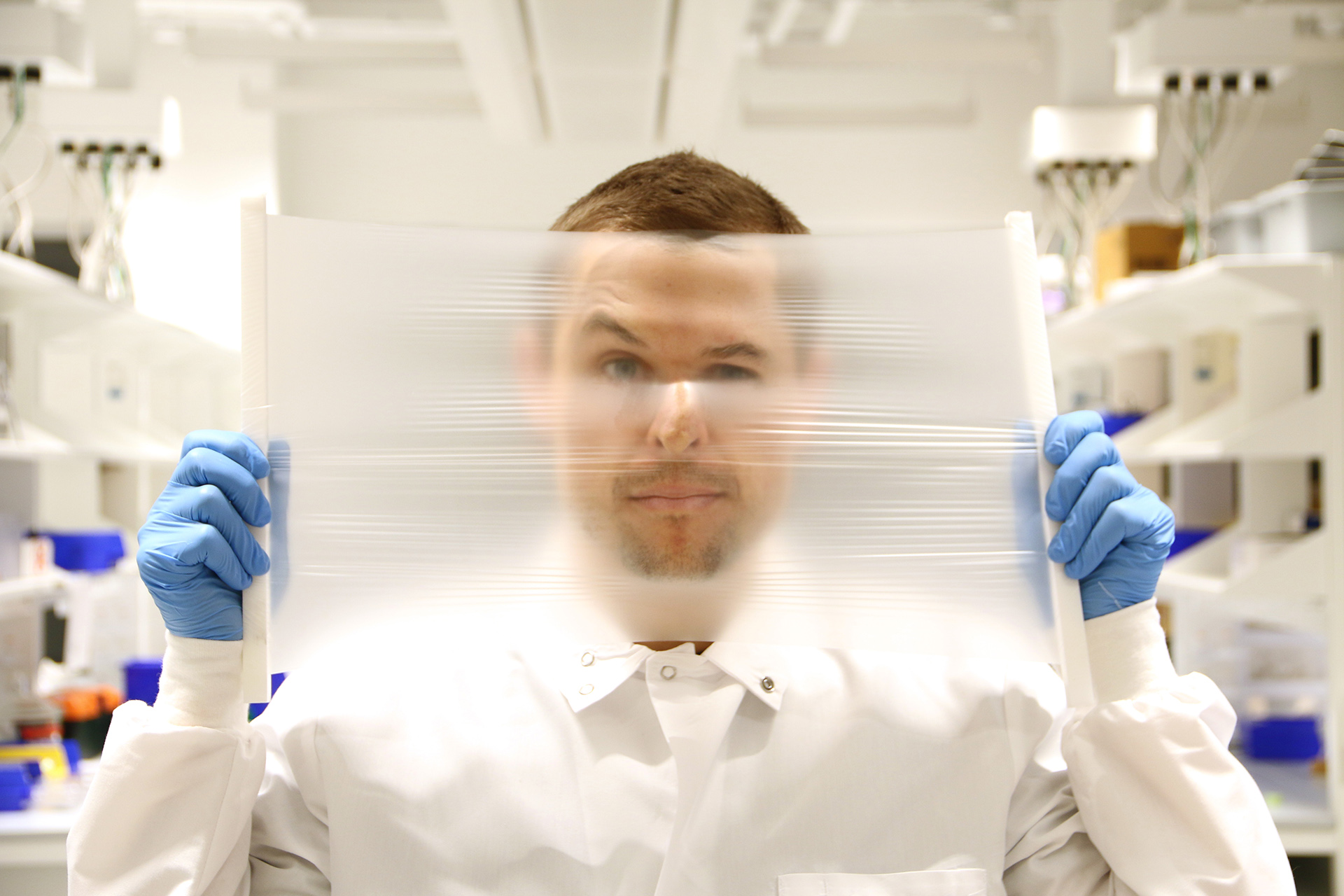Trellis Air technology is revolutionizing energy-efficient air conditioning with its innovative membrane dehumidification system, designed to combat the challenges of climate change. Developed by a Harvard startup, this cutting-edge solution operates similarly to a coffee filter, effectively drying and cooling air while drastically reducing energy consumption. As global demand for cooling skyrockets—projected to rise by 40 percent by 2030—Trellis Air’s groundbreaking approach presents a sustainable alternative to traditional cooling systems that account for an alarming percentage of greenhouse gas emissions. By harnessing advanced scientific principles and applying them to cooling system innovation, Trellis Air is not only addressing the urgent need for more efficient air conditioners but also contributing to crucial climate change solutions. This integration of technology and sustainability positions Trellis Air as a leader in the transition towards greener air management solutions in an increasingly hot world.
The innovative technology developed by Trellis Air represents a significant leap forward in the realm of air conditioning solutions. Utilizing advanced membrane-based dehumidification methods, this pioneering system effectively extracts moisture from the air while simultaneously cooling it, providing an energy-efficient alternative to conventional air conditioning units. As climate-related issues escalate, the need for such innovative cooling approaches becomes more pressing, with Trellis Air at the forefront of these efforts. This Harvard-originating startup exemplifies a new wave of technological advancements aimed at reducing overall energy consumption while addressing the growing global demand for indoor climate control. With a focus on smart engineering and sustainable practices, Trellis Air is setting a new standard in the industry, paving the way for future generations of cooling technologies.
Understanding Trellis Air Technology
Trellis Air technology represents a groundbreaking innovation in air conditioning and dehumidification systems. By utilizing a novel membrane, the technology mimics the natural filtering process of coffee filters, effectively removing humidity from the air while also providing cooling. This innovative approach significantly enhances efficiency, addressing one of the core issues in traditional air conditioning systems: energy consumption. Conventional air conditioners, relying on vapor-compression technology, have been rendering similar results for over a century, leading to a unified market but one with inherent inefficiencies. Trellis Air’s method stands out as it promises reduced energy usage and lower greenhouse gas emissions, making it a vital player in the fight against climate change.
The advent of Trellis Air technology couldn’t come at a more critical time. As global temperatures increase due to climate change, the need for energy-efficient air conditioning solutions becomes more pressing. Traditional air conditioning systems contribute to approximately 4% of global greenhouse gas emissions—an alarming figure. Trellis Air technology aims to disrupt this status quo, providing a method that not only cools but also dehumidifies air with significantly less energy. Such advancements are crucial as analysts project a 40% rise in air conditioning demand by 2030, leading to an escalation in energy consumption and climate-related emissions. This technology not only prioritizes environmental sustainability but also offers a potential revolution in cooling systems.
The Role of Membrane Dehumidification in Cooling Systems
Membrane dehumidification stands as a pivotal component in revolutionizing cooling systems and enhancing energy efficiency. Unlike traditional methods, which often involve energy-intensive cooling and heating cycles, membrane dehumidification utilizes specially designed materials to selectively remove moisture from the air. This innovation enables cooling systems to work more efficiently while minimizing energy drain. The technology behind this membrane is advanced and was developed to ensure high-water selectivity while maintaining durability, which has historically been a challenge in similar systems. By incorporating membrane dehumidification into standard cooling processes, significant reductions in energy requirement can be achieved.
Moreover, the integration of membrane technology in cooling systems offers a dual benefit: it not only addresses energy efficiency but also contributes to healthier indoor air quality. As the world faces increasing humidity levels due to climate change, traditional air conditioning systems merely recycle air, often without adequate humidity control. Membrane dehumidification allows for better management of indoor air by efficiently removing excess moisture, which can lead to mold growth and discomfort. Thus, transitioning to this technology addresses both energy consumption issues and the broader health implications tied to climate change solutions.
Innovative Solutions by Harvard Startup
Among the innovators addressing the pressing challenges of climate change is Trellis Air, a forward-thinking startup emerging from Harvard University. This initiative aims to reimagine air conditioning technology through engineering advancements and scientific insights. Founded by a collaboration of experts in architecture, materials science, and environmental impact, Trellis Air’s mission revolves around developing cooling systems that not only operate sustainably but also effectively combat climate change. The startup’s focus on using unique membranes to extract moisture effectively embodies the fusion of research and practical application, aiming to disrupt the traditional air conditioning market that has remained stagnant for years.
The Harvard startup model exemplifies how academic research can transition into viable commercial solutions that address today’s environmental challenges. Trellis Air’s journey from concept to realization highlights the importance of research funding and institutional support in bringing scientific advancements to market. By licensing its groundbreaking technology, Trellis Air is poised to pioneer a transformation in the air conditioning industry and set new standards in energy-efficient cooling solutions. Their vision extends beyond profit; it’s about creating sustainable technologies that align with global climate goals and support the fight against excessive carbon emissions.
Impact on Global Energy Consumption
As the global demand for air conditioning systems surges, primarily due to rising temperatures and increased heat waves, the energy consumption patterns are set for transformation. Traditional air conditioning units, with their high energy consumption, are major contributors to greenhouse gases, making sustainable innovations like Trellis Air essential. The launch of this technology promises to provide a pathway to significantly reduce energy requirements associated with cooling, thus lessening the overall carbon footprint of air conditioning. By investing in technologies that promise improved efficiency, businesses and individuals alike can contribute to broader climate change solutions.
The anticipated increase in climate-friendly solutions is particularly critical considering projections that air conditioning use will rise by 40% by 2030. Trellis Air’s approach of using energy-efficient methods to cool building interiors sufficiently addresses future demands while reducing reliance on outdated technologies. This pivotal shift not only sets the stage for massive reductions in emissions associated with cooling but also ensures that energy is conserved during peak demand periods, which can alleviate stress on power grids worldwide. As cities continue to grow in population and density, innovative solutions like those from Trellis Air could transform the landscape of urban energy consumption.
Collaborative Research and Development at Harvard
The development of Trellis Air technology owes much to the collaborative environment at Harvard, underscoring the importance of cross-disciplinary research in solving global problems. Researchers from various specializations combined their efforts to develop an effective membrane capable of extracting moisture from air efficiently. The investment and collaboration between the Harvard Office of Technology Development and various department leads facilitated the acquisition of cutting-edge technologies necessary for creating a commercial product. This emphasis on collaboration showcases how scientific inquiry can be harnessed to foster innovation that addresses real-world challenges.
The team behind Trellis Air includes professionals from the Graduate School of Design and the John A. Paulson School of Engineering and Applied Sciences, among others. This multidisciplinary approach is essential in developing any technology that is impactful and sustainable. The joint efforts have allowed Trellis Air to prototype their new technology within living labs like Harvard’s HouseZero, providing invaluable data on its efficiency in real-world conditions. Such initiatives not only advance the development of the product but also contribute to the body of knowledge regarding energy-efficient air conditioning, paving the way for future innovations in the field.
Challenges and Opportunities in the Air Conditioning Market
As promising as the future of energy-efficient air conditioning with Trellis Air technology seems, there are undeniable challenges that highlight the complexities of transitioning the industry. Established players dominate the air conditioning market, typically resistant to adopting new technologies that disrupt their product lines. This presents a significant barrier for startups aiming to innovate how cooling systems operate. However, with increasing awareness of climate issues and the corresponding demand for solutions, there exists an unprecedented opportunity for companies like Trellis Air to carve their niche by offering a superior alternative.
Moreover, as climate regulations become stricter worldwide and consumers become more conscious of energy consumption, the shift towards innovative cooling solutions presents opportunities for growth. The unique capabilities of Trellis Air, particularly its energy-efficient design and membrane technology, position it well to compete against traditional systems. Education and outreach will play crucial roles in gaining trust in new technologies and ensuring stakeholders are informed about the benefits these innovations provide. By demonstrating tangible results through pilot programs and case studies, Trellis Air can effectively showcase the substantial advantages their technology has over conventional air conditioning systems.
Commercialization Strategies for Trellis Air
To ensure successful market introduction, Trellis Air has devised clear commercialization strategies that address not just the technology but also the market’s needs. Wilcox, as CEO, outlines multiple avenues for securing a foothold in industrial applications, particularly looking to replace inefficient desiccant systems and traditional basement dehumidifiers. Furthermore, introducing Trellis Air technology as a ‘pre-drying module’ could enhance the efficiency of existing air conditioning systems significantly. This strategy targets both the immediate consumer market and larger industrial sectors, indicating a versatile application for the technology.
In addition, the team behind Trellis Air recognizes the power of collaboration when seeking to enter new markets. By partnering with organizations and focusing on pilot programs, they can demonstrate the efficiency and cost-effectiveness of their solutions in real-world applications. This not only builds credibility but also establishes foundational relationships with key players within the industry. As they work towards large-scale implementation, these commercial avenues will be crucial for not just the success of Trellis Air but for the broader adoption of sustainable cooling technologies.
Future Trends in Cooling System Innovations
As we move toward a future heavily influenced by climate change, the landscape of cooling system technology is expected to undergo significant transformations. Innovations like Trellis Air technology are at the forefront of this change, embodying a shift toward energy-efficient solutions that reduce carbon emissions associated with traditional air conditioning methods. These advancements reflect a growing trend in the industry toward more sustainable practices, highlighting an increased reliance on scientifically-informed design and engineering breakthroughs that not only prioritize human comfort but also environmental responsibility.
The rapidly evolving climate landscape will also direct investments toward further innovations in cooling technology. Companies are likely to innovate by integrating smart technology, renewable energy sources, and improved materials to enhance the efficiency of air conditioning systems. As the focus on sustainability strengthens, stakeholders—from manufacturers to consumers—will start recognizing the considerable long-term benefits of adopting advanced cooling methods, pivoting away from conventional, outdated systems. This trajectory is promising for the development of a more sustainable and responsible air conditioning industry, ultimately aligning with global climate goals.
Frequently Asked Questions
What is Trellis Air technology and how does it relate to energy-efficient air conditioning?
Trellis Air technology is an innovative cooling system developed by a Harvard startup that utilizes a unique membrane for dehumidification, making it much more energy-efficient than traditional air conditioning systems. By separating water vapor directly from the air like a coffee filter, this technology significantly reduces the energy consumption of cooling systems, addressing the urgent need for climate change solutions.
How does Trellis Air’s membrane dehumidification work compared to traditional AC systems?
Trellis Air’s membrane dehumidification works by using a specially designed membrane to extract moisture directly from the air, unlike traditional AC systems that rely heavily on refrigerants and significant energy consumption. This novel approach not only enhances cooling efficiency but also minimizes greenhouse gas emissions, aligning with goals for energy-efficient air conditioning.
What are the advantages of the cooling system innovation from Trellis Air?
The cooling system innovation from Trellis Air offers several advantages including lower energy consumption, reduced greenhouse gas emissions compared to conventional air conditioning, and a more effective dehumidification process. This makes it a promising climate change solution that has the potential to revolutionize how we cool indoor spaces.
Who developed the Trellis Air technology and what is its relation to climate change solutions?
Trellis Air technology was developed by a team of researchers at Harvard University, spearheaded by Peteris Lazovskis and Jonathan Grinham. Their work represents a significant advancement in climate change solutions by addressing the burgeoning demand for cooling while mitigating the associated energy consumption and environmental impact.
What impact does Trellis Air technology aim to have on future energy consumption?
Trellis Air technology aims to drastically reduce future energy consumption related to cooling systems by providing a more efficient alternative to traditional air conditioning and dehumidification methods, thereby helping to combat climate change and decrease reliance on high-emission cooling technologies.
| Key Points |
|---|
| Trellis Air is a Harvard startup aiming to revolutionize air conditioning technology. |
| Cooling systems contribute 4% of global greenhouse gas emissions. |
| Demand for cooling is expected to rise by 40% by 2030 due to climate change. |
| Traditional air conditioning technology has remained unchanged for over a century. |
| Trellis Air’s system uses a membrane to extract moisture from air, similar to a coffee filter. |
| The technology is more energy-efficient and environmentally friendly than current systems. |
| Prototypes have been tested in harsh climates like Miami to demonstrate effectiveness. |
| The startup aims to position itself within multiple markets, including industrial and residential. |
| Key collaborations with Harvard labs and industry experts have propelled the technology’s development. |
Summary
Trellis Air technology is set to transform the HVAC landscape by significantly improving energy efficiency and reducing greenhouse gas emissions. With rising global temperatures driving an increased demand for effective cooling solutions, the innovations from Trellis Air, such as their membrane-based moisture extraction system, promise to make air conditioning not only more sustainable but also more effective. The collaboration between leading researchers at Harvard ensures that this technology is backed by solid scientific advancements, paving the way for a new era in environmental control systems that align with our climate goals.



